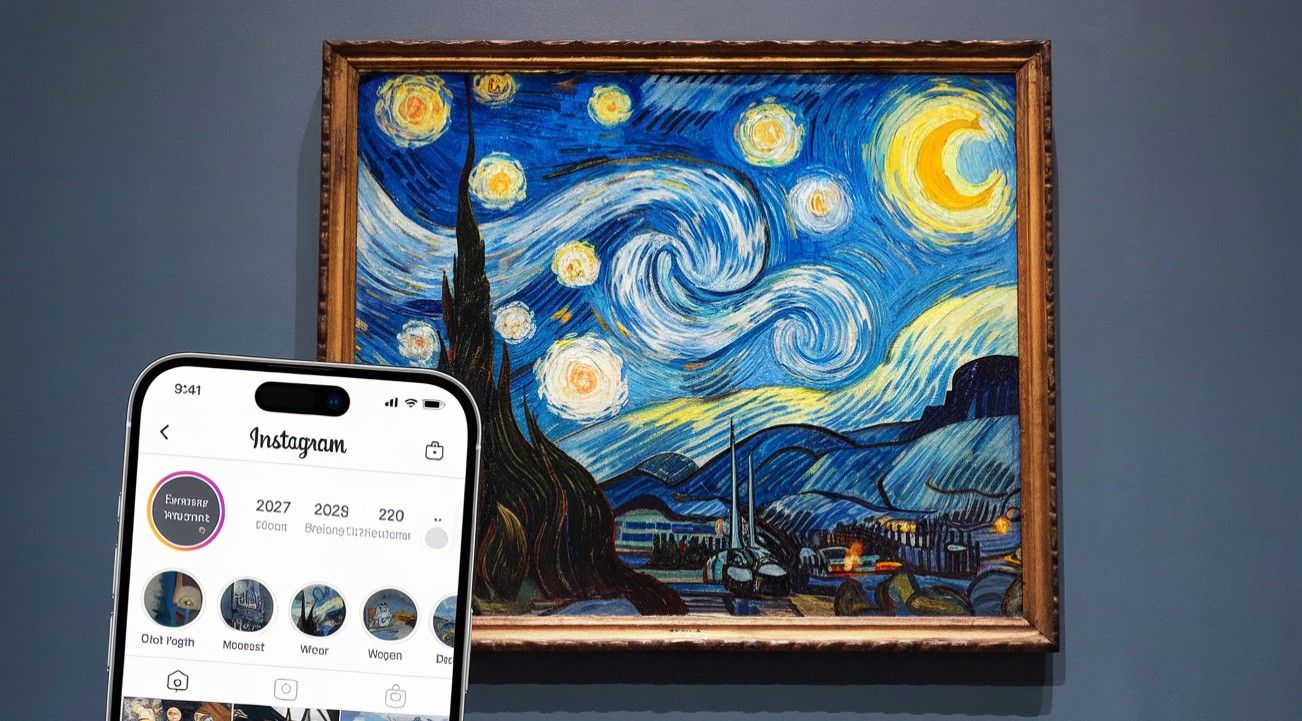
Van Gogh and Instagram: Art and Recognition in the Digital Age
"I would rather die of passion than of boredom." This famous quote by Vincent van Gogh resonates in a surprisingly current way when we reflect on the contemporary artistic scene and its interactions with social media. The Dutch painter, who sold only one work in his lifetime and is now revered as one of the greatest artists of all time, offers us a deep reflection on recognition, artistic value, and social validation.
The Transformation of Artistic Recognition
In 1890, when Van Gogh left this world, he was practically unknown, having sold only "The Red Vineyard" for 400 francs. Today, his works are worth millions, and his images are shared daily by thousands of people on Instagram. This radical transformation in the perception of his work leads us to question: what would Van Gogh's trajectory be like if he lived in the Instagram era?
The Platform as a Global Showcase
The platform, which today has over one billion active users, has become a global showcase for emerging and established artists. Unlike in Van Gogh's time, when artistic recognition depended on a select group of critics and gallery owners, today anyone with a smartphone can build their audience and receive instant feedback on their work.
Challenges of the Democratization of Art
However, this democratization of art brings its own challenges. The same platform that allows global exposure can also create constant pressure for likes and engagement, something that could have profoundly affected the sensitivity of an artist like Van Gogh, known for his emotional intensity and pursuit of authenticity.
The Pursuit of Authenticity
Van Gogh wrote in one of his letters: "What would life be like if we didn’t have the courage to try something new?" This phrase takes on a new dimension when we consider social media algorithms, which often favor "safe" and already tested content, potentially discouraging the artistic experimentation that made Van Gogh unique.
Legacy and Global Reconnection
The irony lies in the fact that his works, today considered masterpieces of post-impressionism, were radically different from the aesthetic standards of his time. His bold strokes, vibrant colors, and unique perspectives would likely have met similar resistance on social media, where trends and aesthetic standards can be quickly established and replicated.
However, Instagram could also have offered Van Gogh something he desperately sought in life: connection. Through his letters to his brother Theo, we know that the artist longed for understanding and recognition. The platform could have provided a global community of admirers and other artists who shared his unique vision of the world.
Final Reflections
Van Gogh's story teaches us that the true value of art transcends immediate recognition. In an era where success is often measured by the number of followers and likes, his journey reminds us that artistic authenticity and the courage to innovate are fundamental to creating something truly lasting.
When we observe the current phenomenon of digital artists and their growth strategies on Instagram, it is crucial to remember that Van Gogh did not change his style to cater to the market of his time. His dedication to his unique artistic vision, although it resulted in rejection during his lifetime, ultimately created a legacy that transcends generations.
Thus, the paradox of Van Gogh in the context of Instagram invites us to reflect on the balance between visibility and authenticity, between immediate recognition and lasting value. His story reminds us that, even in an era of instant validation, true art is born from the courage to be authentic and the willingness to create something new, even if it means swimming against the tide of dominant trends.
- vangogh
- art
- artistic_recognition
- eradigital
- authenticity
- social_validation
- legacy
- craftsmanship
- visual_art